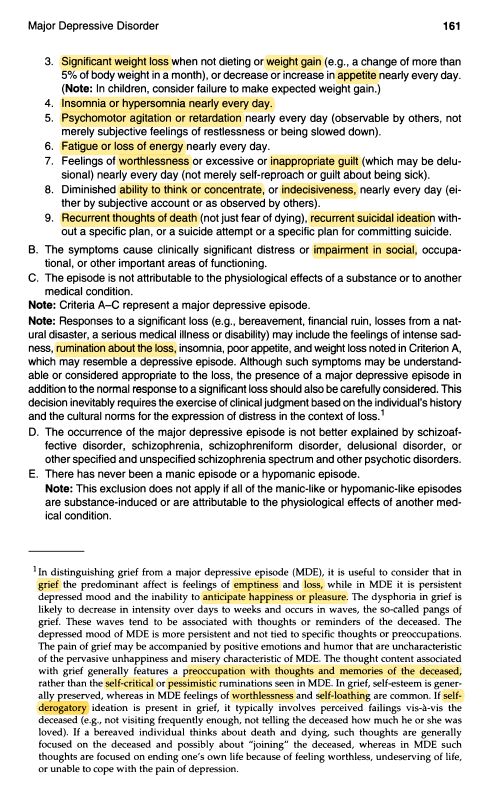

The patients were rated on clinician rating scales of depression, anxiety and irritability, and completed self-report measures.Īpproximately three-quarters of the depressed patients met the criteria for the anxious distress specifier. Two hundred sixty patients with a principal diagnosis of major depressive disorder were evaluated with semistructured diagnostic interviews.

In the present report from the Rhode Island Methods to Improve Diagnostic Assessment and Services (MIDAS) project, we examined the validity of the specifier diagnosed with a semistructured interview. Recent studies that supported the validity of the specifier did not use measures that were designed to assess the criteria of the specifier but instead approximated the DSM-5 criteria from scales that were part of an existing data base.


3. Significant weight loss when not dieting or weight gain (e.g., a change of more than 5% of body weight in a month), or decrease or increase in appetite nearly every day.2. Markedly diminished interest or pleasure in all, or almost all, activities most of the day, nearly every day (as indicated by either subjective account or observation).1. Depressed mood most of the day, nearly every day, as indicated by either subjective report (e.g., feels sad, empty, hopeless) or observation made by others (e.g., appears tearful).A. Five (or more) of the following symptoms have been present during the same 2-week period and represent a change from previous functioning at least one of the symptoms is either (1) depressed mood or (2) loss of interest or pleasure.What are the DSM 5 diagnostic criteria for major depressive disorder?


 0 kommentar(er)
0 kommentar(er)
